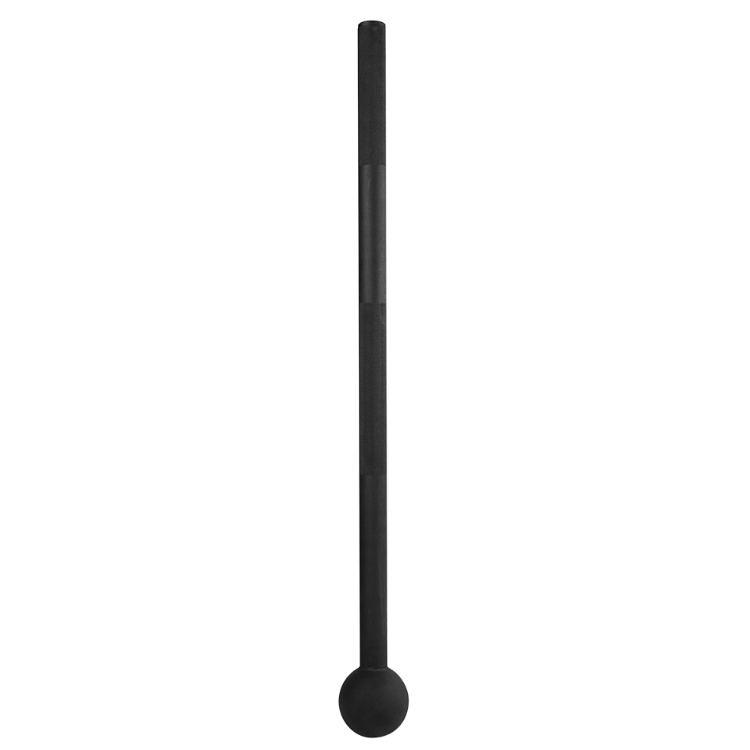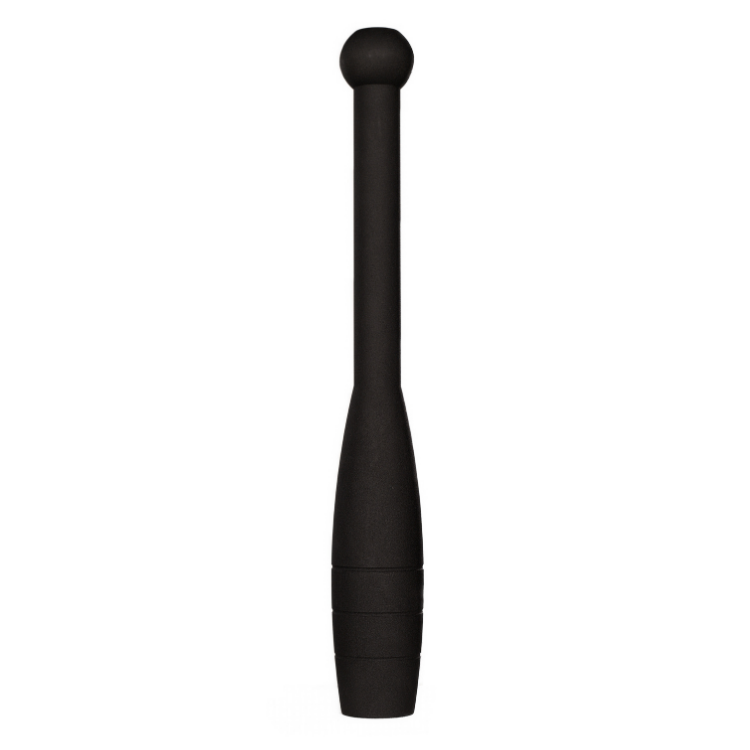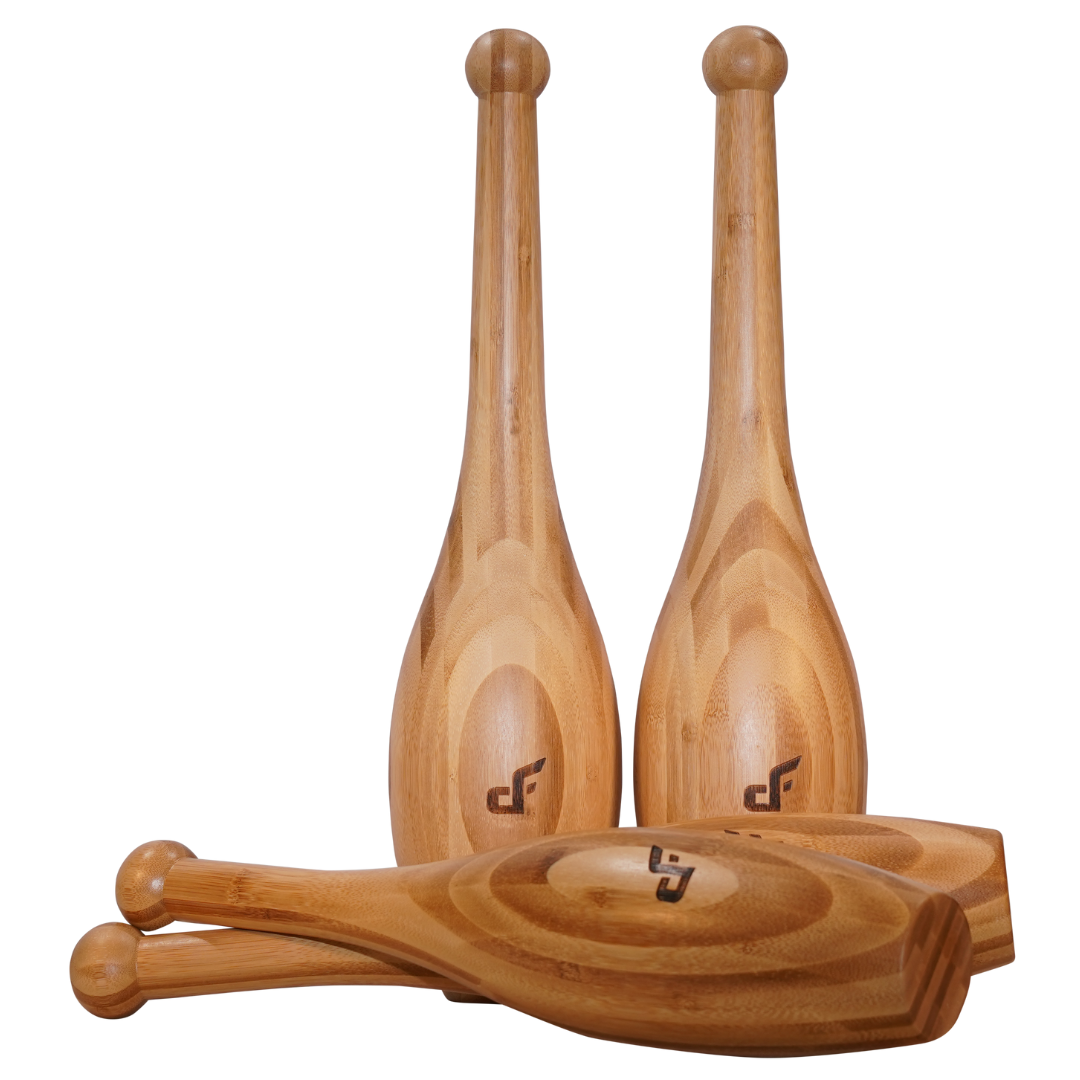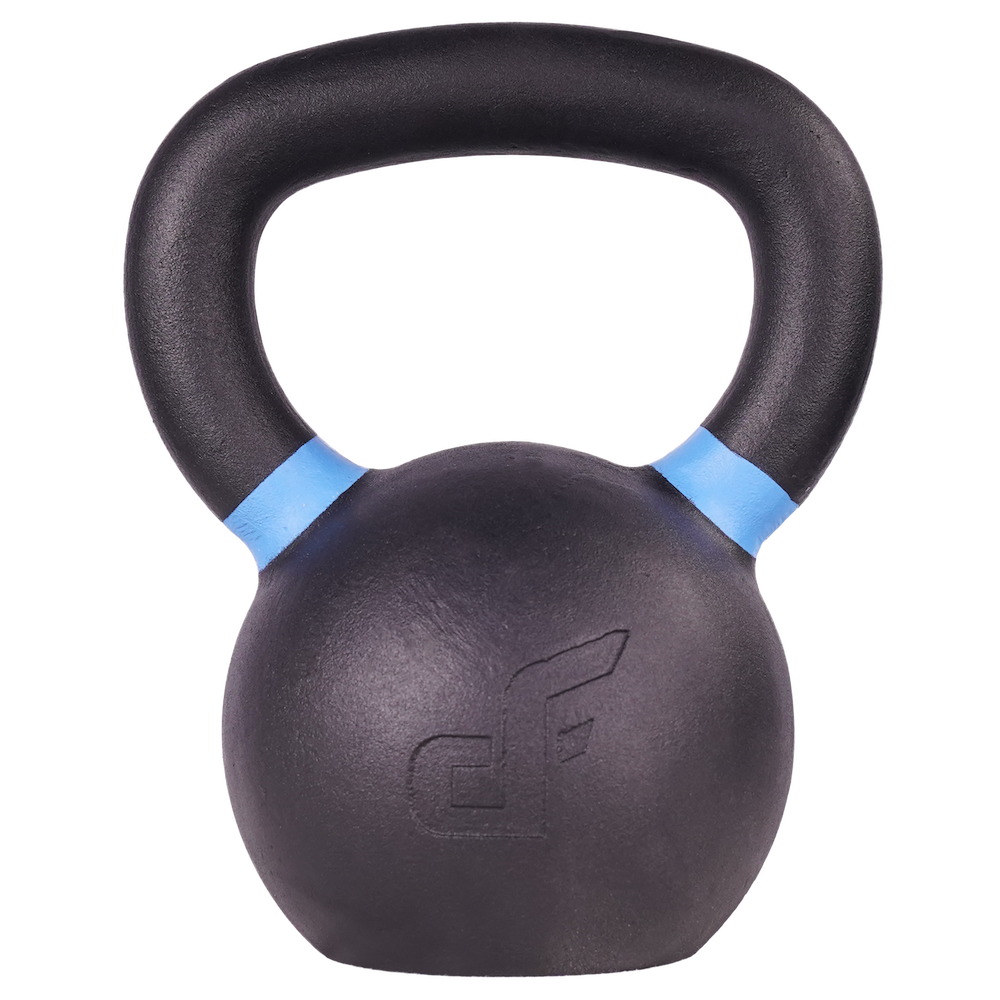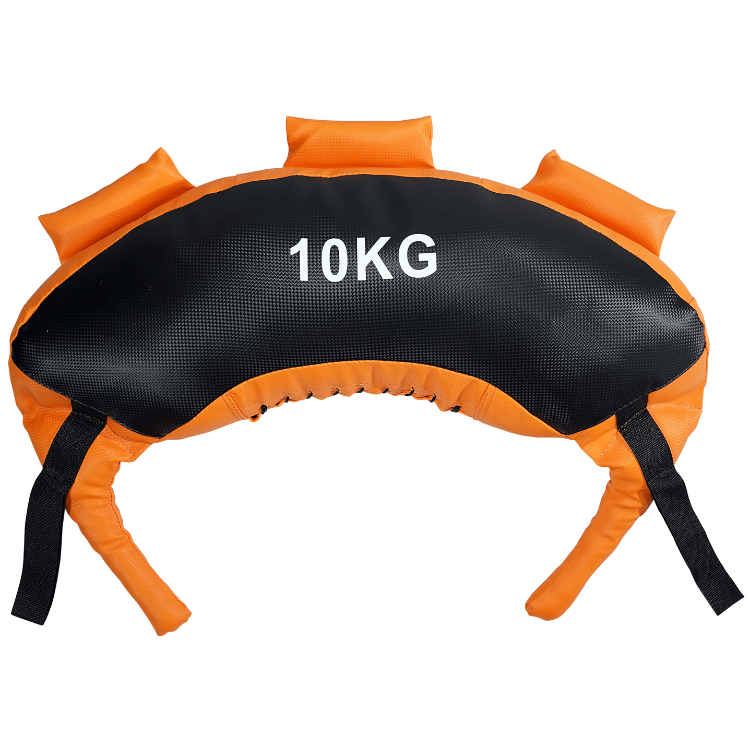Transcript
All right, so we’re going to go into the kettlebell swing now. We’re going to break down the swing into parts, and then we’ll put it all together into one seamless exercise. So to start with, we’re just going to start with the hike, then we’re going to go into the four part movement, then we’ll bring it all in together.
So, to begin with, we’re just going to start with our feet round about hit width apart, shoulder width apart. Any sort of pendulum movements where the kettle bells going front to back we have the kettlebell set up in front of us. Any dead type movement, we set up between our feet.
From there, we’re just going to break it down into the hike, the hike is just the first part of movement.
Really drive those hips back into that Romanian deadlift position. Put two hands on the horns, shoulders down, and packed down. Okay, Shoulders retracted. So I’m not rounding out through the chest.
Shoulders are packed and retracted, looking straight down. I’m not looking at the mirror in front of me. Ideally you would have it straight line between the crown and the coccyx.
And, all we’re going to do there is the first part of the moment, which is the hike. As we bring that kettlebell towards the body, we’re going to fire up the lats and I’m just going to bring that kettle close into the body.
Feed that kettle back in between the legs and keep the arms are connected to your legs. Where I don’t want to be is down close to the floor where I’m just loading up the lower back which is just going to be painful.
Have the kettlebell connected to the body as much as I can. This is a much safe position for the back. You’re going to be able to generate a lot more power as well. On acceleration phrase, when I drive my hips forward, where I don’t want to be is down here where my arms are not connected to my body. It’s called riding a broomstick. Arms are real tight in. So, what I want to do is just going to break it down into the hike. Short, sharp breathing, foot of nose on the hike, short, sharp breath up, foot of mouth on the way back down, making sure you’re feeding that kettlebell back between the legs on the way back.
Yeah, we are going to do the power drive now. So yeah, what that bit really teaches your clients is to make sure that your arms are connected to your body on the hike. When we’re doing into a full swing, what we don’t want to happen is be arms completely disconnected. So, I’m going to break it into the next movement now. So four part movement. So oftentimes when your people do a swing, they actually do two parts movement. It’s actually a four part movement. So, we’re going to break it down without the kettle, and then we’re going to build up with the caterpillar. So we did the first part. So the first part was the hike, or thin it back between the legs. So okay, it’s number one. Number two is the hip drive. So full extension. So straight line between my ankle, knee, hip, shoulder, and ear.
It’s only when I’m in full extension, my arms leave my body. That’s number two. So one hike, two hip, drive free. We float up to shoulder height. So, we’ve hard style kettlebell training. We’re not going above the head. Uh, like CrossFit, they did at WODs. Reason. They come up, they’re doing their WODs, they want to count the reps, but there’s very little advantage in going from here to here, There’s a lot more sort of disadvantages, So most people don’t have the thoracic mobility to be able to lift their arm on the shoulder mobility to be allowed to lift those arms overhead, because the point of contact on the can valve is much smaller than your shoulders. So, a lot of people going to come into extension or compensate elsewhere, and then when you’re under load compensating, that’s going to go into the lower back.
So, there’s very little benefit. I know they do it for the CrossFit, CrossFit sport, which is fine, sort the WOD workouts. But as a general rule, there’s no need to come up anywhere higher and should whip. All right? So, and then number four is on the way down. So I’ll just put it down number four. So one hike, two hip drive, three, float up number four. Okay, We’re floating down, we don’t hinge again, and to our arms have touched their hips. This is probably the biggest thing I see with people when they starting with KET swings, they hinge too early before the arms have connected, they end up in this position here, and then when you start loading up with double kettlebells with heavier weights, you’ve got a lot of load getting up into that lower back and that’s not a very strong position, all right?
It’s much stronger to be in full extension here, then have that weight pull you into, into a hinge, rather than be here. So a lot of people do a one two movement. They’ll go, so 1, 2, 1, 2, 1 rather than 1, 2, 3, 4, 1, 2, 3, 4. So what we’re going to do is without the kettlebell, we’re just going to break it down into those four parts, and then we’re going to put it all together with your ideal spine position as well. So, an ideal spine position is a, is a 45-degree angle between your crown and your coccyx. That’s your most powerful uh, position. So, if you think you’re like, if you’re doing a broad jump, okay, that’s the position you are in, that’s our most powerful position. That’s your most explosive, most athletic, that’s where we want to be in when we’re doing our swing. So what we say is that’s a 10 and a four.
So, your head’s at 10 o’clock, your butt’s at four o’clock. That’s the ideal position, at 45 degrees. So what we don’t want is a nine and a free a nine and a freeze. I’ve gone too low, my heads at nine o’clock, my butts at three o’clock, and I’m almost horizontal. We don’t want nap. A lot of that pressure’s going to go into the lower back, and we don’t want to shadow swing shadow swings where I’m not feeding the kettle back enough and I’m too kind of upright. So we say that’s 11 and a five. So your head’s at 11 o’clock, butts at five o’clock. So we want a 10 and a four. Nice 45 degree angle. All right guys, How’s everyone going out? All good? Solid. Alright, we’re going to put it together now. All right. So, setting up with a karate chop. We’re going to get the keep the bell 10 inches in front of us. Karate chop those hips back. Filled a stretch on the hamstrings and glutes. Filled a stretch on the hamstrings and glutes. Shoulders are packed and retracted. We’re going to grab the horns as we’re pulling that kettle in towards the body, we’re firing up the lats. We’re going to do our hike. Remember, you’re breathing. Inhale for the nose. Exhale on acceleration phase. From there, it’s a real big hip drive.
Want to learn more about kettlebell training?
Want to become a certified kettlebell instructor?
Click here to learn more:
https://www.dangerouslyfit.com.au/academy/

